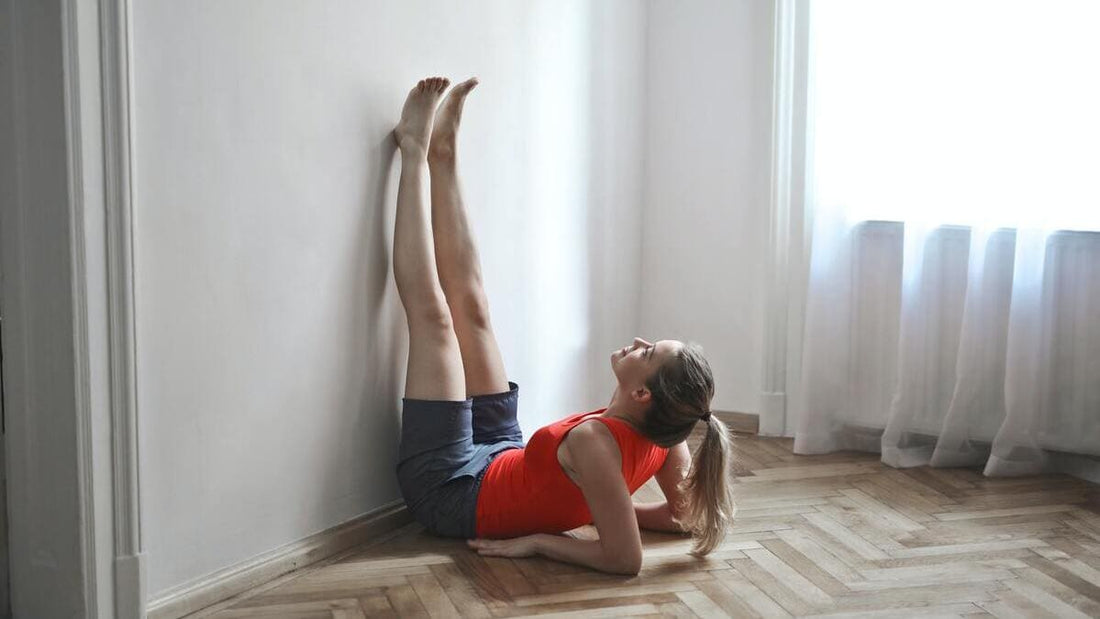Subscribe Us
Subscribe to our newsletter and receive a selection of cool articles every week
Train legs at home: exercises, routines and recovery

The leg muscles are involved in most of the actions we carry out during the day, as they are the main propelling force of the body. A good condition of the quadriceps, hamstrings, abductors, calves and glutes is essential to be able to keep up with the hectic pace of each day and maintain an active and healthy lifestyle. Therefore, specific training of this muscle group provides multiple benefits. And the best thing is that it can be done from home.
Leg exercises to do at home
You don't need a gym or specialized machines to carry out functional leg training to improve your physical condition. It is enough to carry out some exercises that use your own body weight -weights can be incorporated if you are looking for a progression- in a minimally cleared space such as it can be the living room at home or a room.
Heel raises
To train the calves, calf raises are an ideal option. In this case, all you need is a small, low, stable and resistant support, such as a thick book or a wooden pallet, which should be placed under the tip of your feet. Once raised on the front part of the feet, you have to stand on your toes and go down, always with your heels suspended. The range of repetitions and the number of series depends on the physical level of each person.
Lateral lunge
The lateral lunge is a very complete exercise to tone the glutes, quadriceps, hamstrings and calves, as well as the adductors and abductors. The technique is as follows: we stand with our feet aligned with our hips and our hands on our waists - if we put our elbows back, we will gain stability. Then, one leg is moved to its natural side, while the other remains straight. Hold for three seconds and return to the starting position. As many repetitions as possible and then with the other leg.
Jump Squat
The combination of strength and cardio is great and the jump squat provides it. It is about performing a classic squat, with the feet facing forward, parallel, and the back straight -it is important to avoid curvature-. Although, once completed, it must be linked with an explosive jump upwards, reaching straight legs and fully extended knees. As in all cases, the repetitions and series will depend on the level of each person.
Step up or rise to the box
We leveled it up a bit. The step up is an exercise to work the quadriceps, hamstrings, calves, and hip flexor thighs, but it also engages the abs and glutes. A stable bench, box, or chair is placed at knee height, raised with one leg until the knee is extended, and lowered steadily. First with one leg and then with the other.
Routines for legs at home
Once we have reviewed some of the most complete and easy-to-perform exercises, although there are many more, it is important to resolve the question of how to combine them, what planning to follow and how to distribute the training sessions during the week. It is important to be clear that there is no magic formula and that the best thing is to gradually adapt the number and composition of the routines to the tastes and possibilities of each one. Here is simply an indicative guide.
Day 1
- Squats / Jump Squats: 2-5 sets of 10-15 reps
- Sumo squats: 2-5 sets of 10-15 reps
- Lateral lunges: 2-5 sets of 10-15 reps
- Wall sit: between 2 and 5 series of 30 seconds - 1 minute
Day 2
Day 3
- Step up or raise the drawer: between 2 and 5 series of 10-15 repetitions
- Jumping jacks: between 2 and 5 series of 30 seconds - 1 minute
- Pistol squat: 2-5 sets of 10-15 reps
- Wall sit: between 2 and 5 series of 30 seconds - 1 minute
Muscle recovery in the legs
After an intense workout, the legs will suffer great wear and tear and pain or a sensation of stiffness will appear. Therefore, carry out a plan to accelerating muscle recovery is of vital importance, since it allows us to continue physical activity the following days. If not, we can hinder our progress. Although there are specific plans, from muscle recovery for cyclists For example, the most efficient options for the athlete in general are the following.
Ice Baths
Cold provides great benefits for circulation, as it favors the dilation of blood vessels, as well as working as a natural analgesic. Thus, filling the bathtub with ice or cold water will promote muscle recovery in the legs.
Massage
Another option that never fails is to massage the muscles to recover, preferably at the hands of a professional masseur or physiotherapist. This massage helps to eliminate leg stiffness and mobilize fluids that accumulate after physical activity.
Use pressotherapy machine
The sports pressotherapy is a non-invasive technique that uses special compression garments to apply controlled pressure to certain areas of the body. This sequential and gradual pressure stimulates the circulatory and lymphatic system, promoting the drainage of liquids and toxins accumulated in the tissues. There are pressotherapy machines that allow you to perform this technique at home and without the need to go to a professional.
Stretches
As much as we look for elaborate techniques and go to professionals, the athlete's greatest ally is stretching. Attention, its benefits can become inconvenient if performed at the wrong time or with too much intensity. You should stretch after a few minutes or even hours from the end of the exercise and gently. One recommendation is to stretch after showering after finishing.








